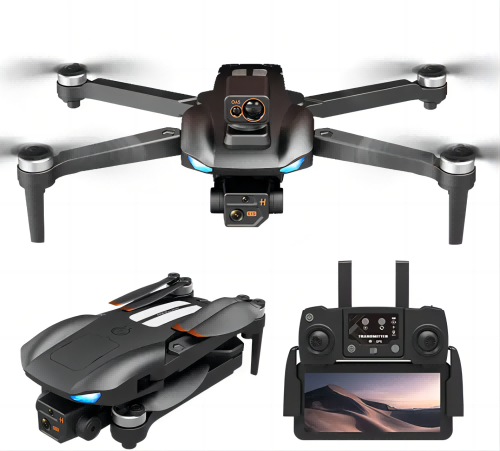
Artificial intelligence is becoming more and more embedded in our daily lives. From targeted ads on social media, to job candidate screening, airline pricing, voice-controlled heating systems, cultural creation, and traffic management, AI is already playing a major role in shaping the modern world. As technology continues to evolve, its influence will only grow.
Elon Musk once predicted that by 2017, Tesla's self-driving cars would be capable of safely navigating the entire U.S. without any human input. Meanwhile, social robots are expected to become common in homes and care settings within the next decade, performing tasks that were once exclusive to humans.
Experts believe that by 2050, we may achieve what is known as artificial general intelligence (AGI), a form of AI that can perform any intellectual task that a human can. AGI is a key component of the Singularity concept, where machines surpass human cognitive abilities, leading to deep integration between humans and computers. The future beyond that remains uncertain, but it’s clear that AI is reshaping the way we live and work.
Do you have an AI strategy? Or do you wish to develop one? One intriguing idea is to integrate computer components into the human body, allowing for faster data processing. Concepts like the "nerve grid" could act as an external brain, connecting us to devices in real-time. This could revolutionize medical implants, such as electronic pacemakers or titanium joints, paving the way for semi-robotic enhancements.
As AI advances, its military applications are also becoming a topic of concern. Fully autonomous weapons, which can identify and eliminate targets without human involvement, raise serious ethical questions. These systems learn from past conflicts, making them potentially dangerous if not properly regulated.
Some of these visions of AI dominating the future feel like scenes from science fiction, reminiscent of the Terminator movies. But while they may seem far-fetched now, the reality of AI's impact is already here.
Unintended biases in AI systems have already sparked controversy. For example, a machine learning algorithm was recently criticized for suggesting bomb-making materials to users, promoting gender bias in job ads, and spreading hate messages online. These issues often stem from flawed data inputs, highlighting the need for better oversight and accountability in AI development.
Recently, a young man with a history of mental health struggles was denied a job due to his performance in an AI-driven personality test. He claims he was unfairly treated, but since the algorithm’s decision-making process is opaque, there are currently no legal protections against such outcomes. Similarly, China’s “social credit†system has raised concerns about how personal data is used to assess citizens’ behavior, influencing access to loans and other services.
Given these challenges, there is a growing need for AI ethics and legal frameworks. Governments and companies must take responsibility for ensuring fairness, transparency, and accountability in AI systems. Researchers like Yuval Noah Harari have explored ethical dilemmas, such as the moral implications of driverless vehicles. Initiatives like MIT’s Ethics Machine aim to gather public opinions on AI ethics, reflecting a broader effort to shape responsible AI development.
However, ethics is just one part of the equation. Emotions play a crucial role in how humans interact with AI, yet this area remains largely overlooked. Despite the growing field of emotional computing, studies show that less than 2% of AI research focuses on emotions. This gap raises important questions: Should AI systems be designed to understand and respond to human emotions? And if so, how?
Emotional AI involves two main aspects: recognizing human emotions and responding appropriately. Advances in biometric sensors allow machines to detect emotional cues through facial expressions, voice tone, and physiological responses. While these technologies are improving, their use can be both beneficial and concerning. Companies might use emotional data to personalize marketing, while politicians could tailor messages to manipulate public opinion.
On the other hand, humans themselves tend to project emotions onto machines. We treat digital assistants as if they have feelings, even though we know they are just algorithms. This phenomenon, known as the “Media Equation,†highlights how our basic need for connection drives us to engage with technology as if it were alive.
When people lack real social connections, they may turn to AI for emotional support. This is the basis of the “Social Surrogacy Hypothesis,†which suggests that virtual interactions can fulfill some of our emotional needs. Whether it's a digital assistant offering comfort or a robot expressing sadness, humans are capable of forming emotional bonds with machines.
Robots, especially those that resemble humans, tend to elicit stronger emotional responses. The more human-like a robot appears, the more likely we are to feel empathy or even sadness when it is harmed. However, there is a point at which this emotional connection breaks down—known as the “Uncanny Valley.†When a robot is almost human but not quite, it can evoke discomfort rather than affection.
Touch-based AI is another emerging field. Devices like Paro, a robotic seal used in nursing homes, demonstrate how physical interaction can enhance emotional engagement. As AI continues to evolve, we may see more applications in healthcare, education, and daily life.
Studies suggest that children can accept AI teachers, though some express concerns about the emotional impact of learning through machines. While over 40% of respondents in a Korean survey were open to AI-led education, many still value human interaction.
As Harvard psychologist Steven Pinker notes, AI can create the illusion of social connection, but it cannot replace the real emotional experiences that come from human relationships. While AI may offer convenience, it lacks the depth and authenticity of genuine human interaction.
So, as we move toward a future filled with AI-driven solutions, we must ask ourselves: Are we losing something essential in the process? Will we continue to crave real emotional connections, or will we settle for simulated ones? The answer isn’t clear, but one thing is certain—AI is changing the way we think, feel, and connect with the world around us.

Photography Drone,High Definition Photography Drone,Three Axis Anti Shake gimbal High definition Photography Drone
Jiangsu Yunbo Intelligent Technology Co., Ltd , https://www.fmodel-ai.com